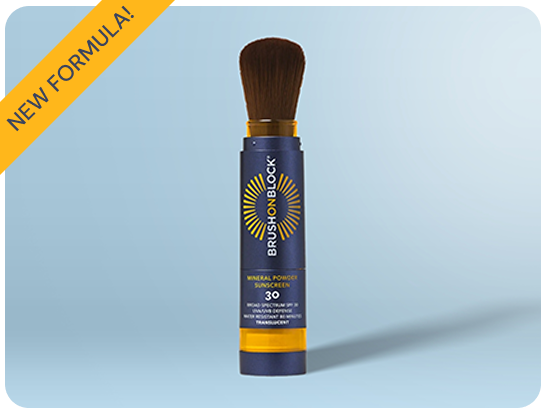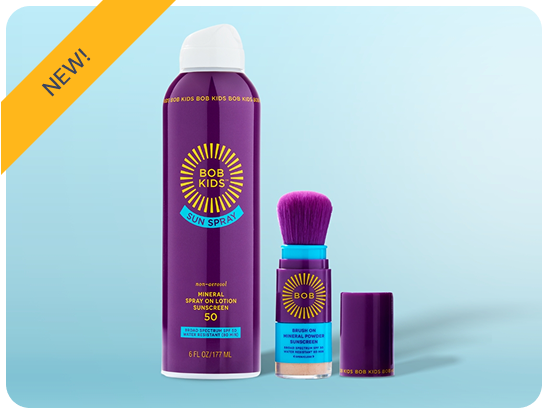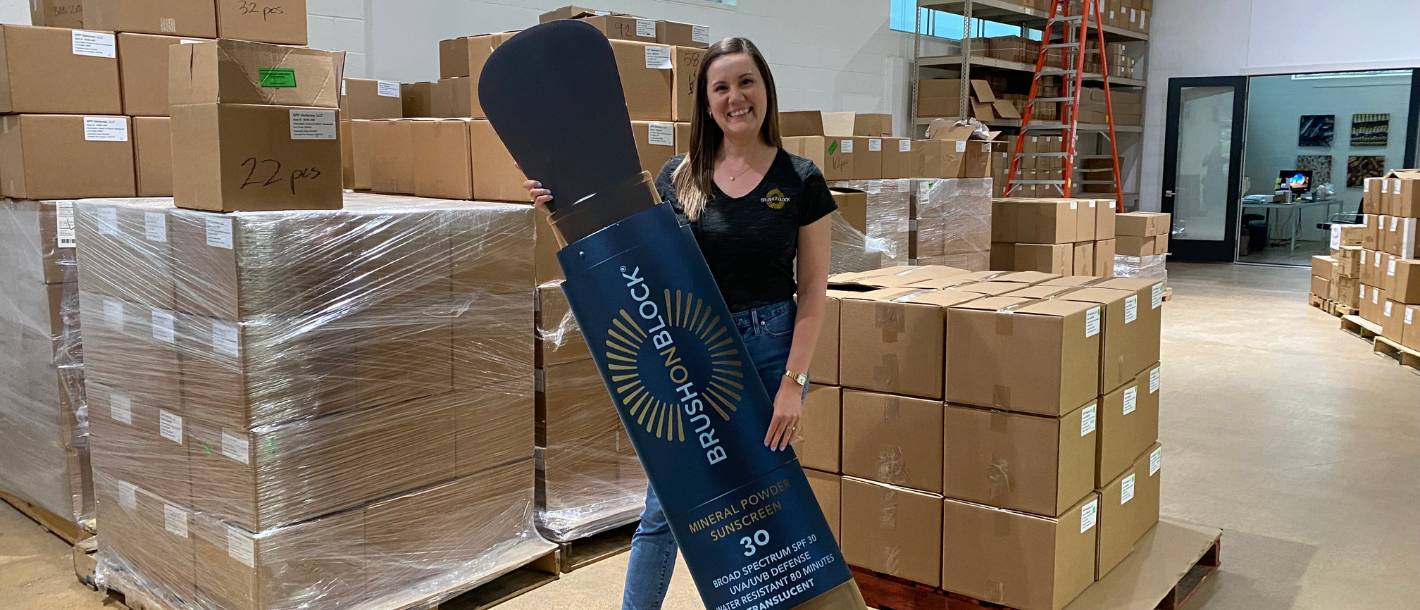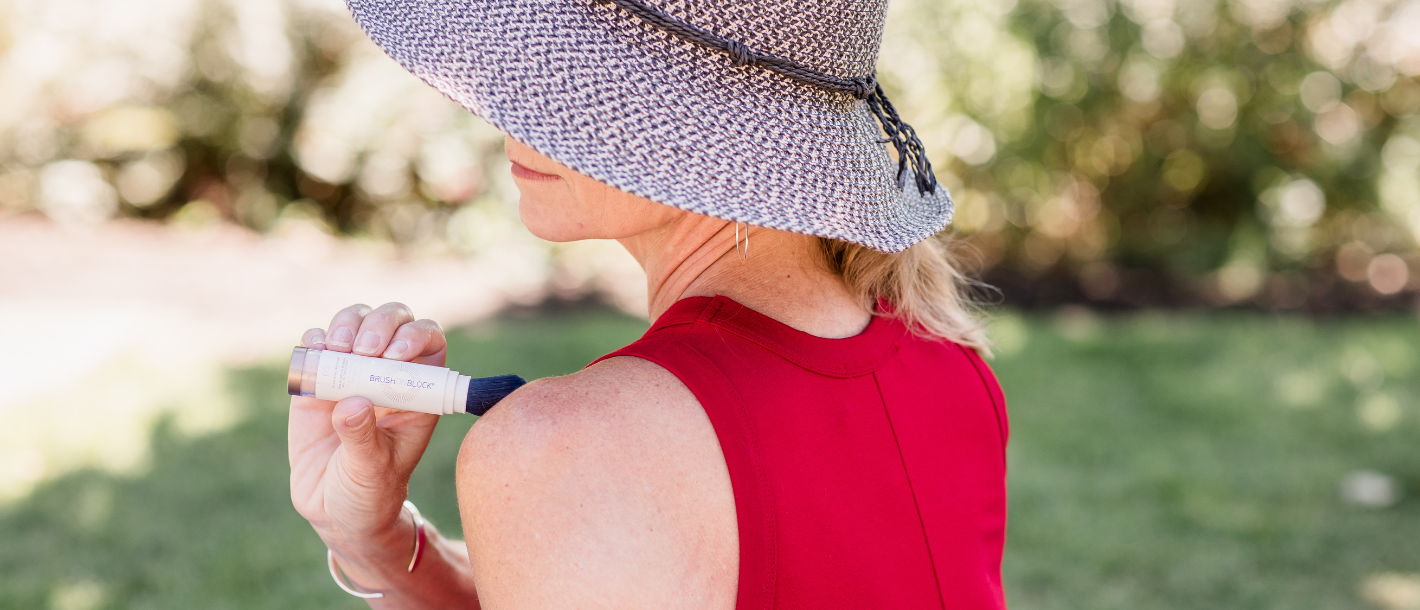I have always loved the sun, but I’ve had a complicated relationship with sunscreen. Early on, I remember the burning sensation that would engulf my face and eyes after applying. After enough complaining, my dad suggested I try a Zinc-only sunscreen when I was in high school playing tennis, but the embarrassing white cast did enough to my 15-year-old dignity that I decided the burning wasn’t so bad. Ever since, I’ve used “sheer” or “lightweight” versions of sunscreen for my face which – whether true or not – seemed to burn less.
That is until about six months ago when I joined the team at Brush On Block, which automatically registered me for a crash-course in sunscreen. I’m thankful to finally be applying sunscreen that doesn’t burn my skin and to now be addictively reapplying sunscreen, but I’ve been overwhelmed by my learnings. Between ingredients, myths, and misconceptions, there is so much to know. As the pool parties and lake weekends commence, I’ve been sharing our products and my learnings with friends and have realized there are lots of shared questions about sunscreen – here are some of my favorite new-to-me truths.
What I Thought - I should wear sunscreen daily. I had rationalized that if my sunscreen doesn’t have to do the work of protecting me from the actual sunrays that I didn’t really need to reapply (you can laugh).
What I Learned - You must reapply sunscreen every two hours, even if you’re not baking in the sun. Putting my sunscreen on at 7am was not going to help protect me on my lunch outing at noon. I had mostly rationalized this because there was no way I was going to put liquid sunscreen over my make-up, or smell like a day at the pool in my 2 o’clock meeting. (Product plug: cue powder sunscreen!)
What I Thought - I like a 30-50 SPF: just enough protection to allow me to get a little color. My more fair-skinned husband needs double that: 70-100 SPF or burn.
What I Learned - SPF 100 is not twice the protection of SPF 50, and tanning is still sun damage. Perhaps most importantly, it’s not twice the protection and it does not last any longer. The difference between SPF 50 and SPF 100 is about 1%. The reason one of us got burned or tanned more than the other has always been due to the diligence of reapplying. Speaking of tanning, that is still sun damage. I had the perception that a sunburn was the only indication of real sun damage, and that a tan was maybe a little sun damage. I was grateful to also learn that some recent studies have shown that sun damage can be reversed with diligent daily sunscreen use. Phew.
What I Thought: Wearing sunscreen automatically means you have broad spectrum protection.
What I Learned: Not inherently true for chemical sunscreens, so check the label/packaging to be sure. On the other hand, mineral ingredients such as zinc oxide and titanium dioxide, which are the primary active ingredients in most mineral sunscreens, provide broad-spectrum protection.
What I Thought: Chemical sunscreens are the only ones regulated or tested. Mineral sunscreens are the “crunchy” version and aren’t put up against the same standards.
What I Learned: ALL (legitimate) sunscreens are tested! It may seem strange, but I’ve been comforted to learn the depths of the process of sunscreen testing. Everything from packaging stability to skin reactions (aka RIPT), and of course how it stands up to UVA exposure (aka PET). Seeing how hydrophobic mineral powder sunscreen is (try mixing it with water) also inspires faith in how effective this form of sun protection is – fun party trick, too!





